Right-wing terrorists twice as likely to kill Americans than Muslim jihadists are ‒ report
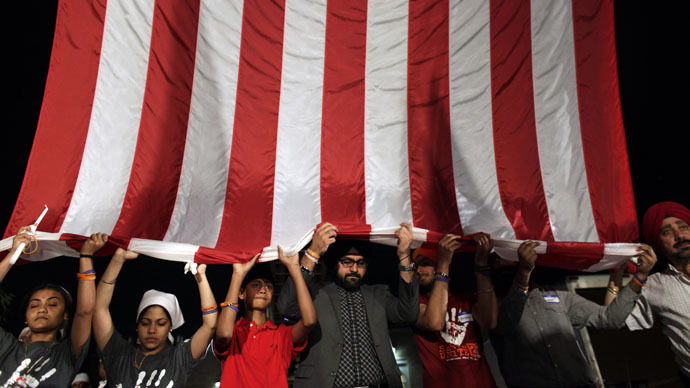
Nearly twice as many Americans have been killed by right-wing extremists since 9/11 as have died at the hands of radical Muslims on US soil, a new report found. There have also been nearly three times as many deadly right-wing attacks as jihadist ones.
In almost a decade-and-a-half, 48 Americans have died in the US in 19 attacks by white supremacists, so-called “sovereign citizens” and other non-Muslim extremists, while 26 have died in seven jihadist attacks on US soil during that same time period, research center New America found as it compiled a new database on deadly attacks in the US since 9/11.
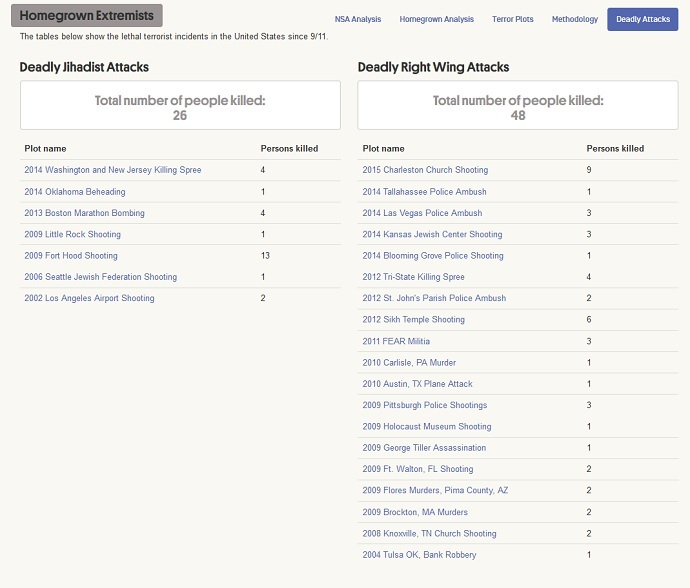
"Since 9/11, our country has been fixated on the threat of jihadi terrorism," said Richard Cohen, president of the Southern Poverty Law Center, according to the Kansas City Star. "But the horrific tragedy at the Emanuel AME reminds us that the threat of homegrown domestic terrorism is very real."
Last Wednesday, nine African-Americans were shot and killed at Emanuel African Methodist Episcopal Church in Charleston, South Carolina. Dylann Storm Roof, who later confessed to the massacre, made racist statements as he killed his victims, survivors told police. A website believed to belong to Roof contained a white supremacist manifesto, as well as photos of him posing with a gun, carrying the Confederate flag and burning an American flag. The Charleston shooting has not been officially labeled as terrorism, however, and Roof has not been charged with any crimes more heinous than murder.
The New America database shows that attacks like Roof’s are a much more common occurrence than those like the 2013 Boston Marathon bombings, in which Muslim brothers Tamerlan and Dzhokhar Tsarnaev killed four people and injured over 260 more in a religiously motivated attack.
The dataset ‒ compiled by David Sterman, a New America program associate, and overseen by Peter Bergen, a terrorism expert ‒ relied mainly upon court documents, wire service reports and news reports as sources. A small number of individuals who either died or were killed without being charged, and are widely and credibly reported as having engaged in violent extremist activity, were included in the list of charged extremists.
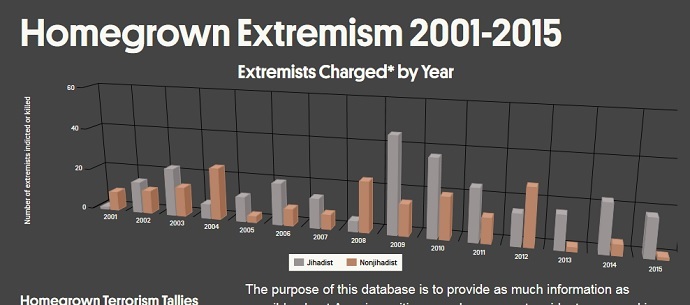
“The purpose of this database is to provide as much information as possible about American citizens and permanent residents engaged in violent extremist activity as well as individuals, regardless of their citizenship status, living within the United States who have engaged in violent extremist activity,” Sterman and Bergen wrote. "We examine both those individuals motivated by Jihadist ideology, understood as those who worked with or were inspired by al-Qaeda and its affiliated groups, as well as those motivated by other ideologies that are non-Jihadist in character, for example right wing, left wing, or idiosyncratic beliefs.”
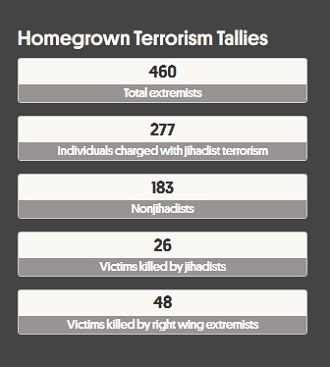
There were killings that gripped the national conscience but were not included. A North Carolina man who confessed to killing his three Muslim neighbors and had posted angry critiques about religion online, for instance, was omitted because the shooting may have been related to a parking dispute. Likewise, New America did not include massacres that did not appear to have ideological motives, such as the Aurora, Colorado movie theater shooting or the Sandy Hook Elementary School shooting in Newtown, Connecticut.
The report may even be understating the number of right-wing terrorist attacks in the US because the media often reports other, non-political motivations when the perpetrators are white, critics contend.
“With non-Muslims, the media bends over backward to identify some psychological traits that may have pushed them over the edge,” Abdul Cader Asmal, a longtime spokesman for Boston’s Muslim community, told the New York Times. “Whereas if it’s a Muslim, the assumption is that they must have done it because of their religion.”
New America noted that it focused on the acts themselves and remained neutral on whether the perpetrators’ motivations were considered to be violently extreme.
“We recognize that extremism is a subjective term and that the First Amendment protects the right to hold extreme political views,” Sterman and Bergen wrote. “Our dataset takes no stance on whether particular ideologies are extreme but focuses on violent extremism understood as the use of violence in pursuit of any political ideology whether that ideology is considered mainstream in the United States or not.”
Facts vs. public perceptions
The New America database runs counter to public perception, which says that Muslim jihadists on US soil are a much larger threat to Americans. The people tasked with rooting out violent extremists and preventing attacks from occurring, however, see threats in line with what the dataset found, according to a survey about to be published.
That study ‒ set to be published this week by the Triangle Center on Terrorism and Homeland Security and the Police Executive Research Forum ‒ asked 382 police and sheriff’s departments nationwide to rank the three biggest threats from violent extremism in their jurisdiction.
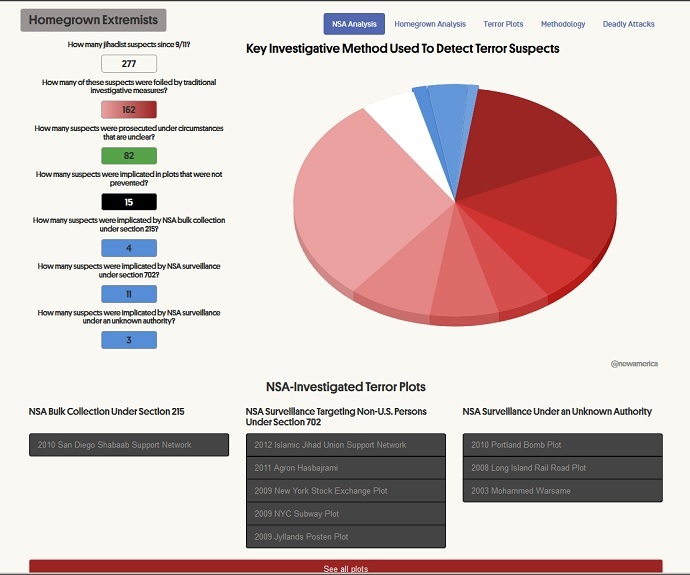
About 74 percent listed anti-government violence, while 39 percent listed “Al Qaeda-inspired” violence, according to study authors Charles Kurzman of the University of North Carolina and David Schanzer of Duke University.
“Law enforcement agencies around the country have told us the threat from Muslim extremists is not as great as the threat from right-wing extremists,” Kurzman told the NY Times.
The mismatch between public perceptions and actual cases of jihadism in the US has become steadily more obvious in scholarly research, but that realization hasn’t made its way into the mainstream American conscience yet, John G. Horgan, who studies terrorism at the University of Massachusetts Lowell, told the NY Times.
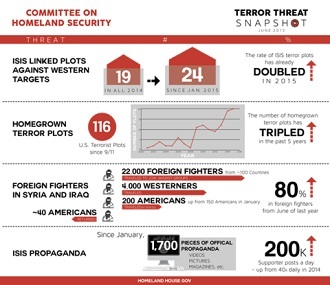
“There’s an acceptance now of the idea that the threat from jihadi terrorism in the United States has been overblown,” Horgan said. “And there’s a belief that the threat of right-wing, antigovernment violence has been underestimated.”
The government ‒ or at least Republicans on the House Committee on Homeland Security ‒ may be playing into the public misconception that jihadi terrorism is the biggest threat Americans face. On Friday, the committee introduced its new, monthly Terror Threat Snapshot that will track “the escalating and grave threat environment facing the United States.”
“Terror threats to the US homeland have reached unprecedented levels,” committee chairman Michael McCaul (R-Texas) said in a statement. “There have been 116 homegrown jihadist plots in America since 9/11— more than half of those have occurred in just the past three years.”
According to that tool, the number of homegrown terror plots since 9/11 has tripled in the past five years. The data was compiled by the committee’s majority staff.












